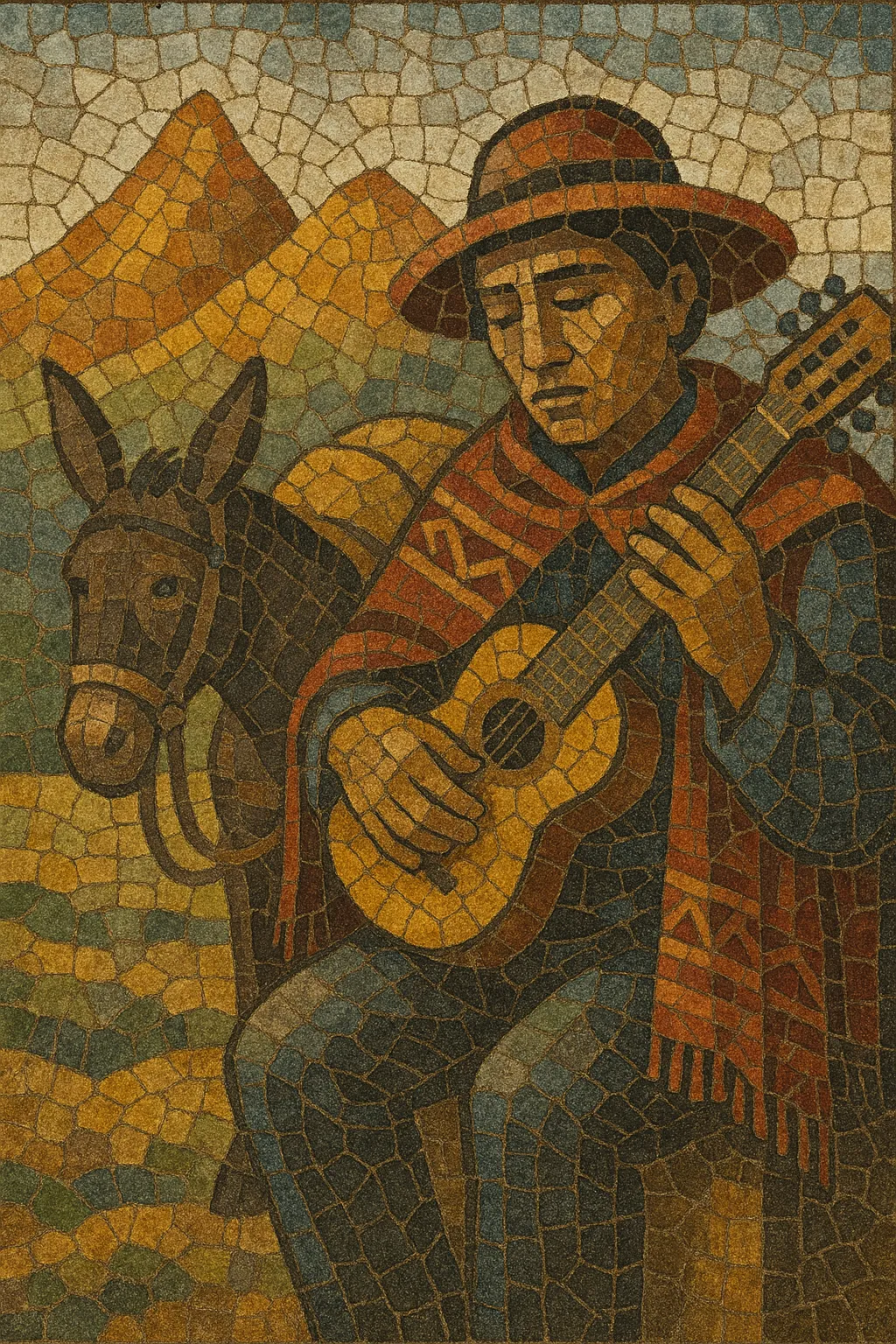Muliza is a traditional Andean song-dance associated with the mining highlands of Bolivia, especially the department of Potosí, and later neighboring regions of the Altiplano.
It emerged from the muleteers’ (arrieros) culture that transported ore and supplies along arduous mountain routes, which shaped its bittersweet, reflective character.
Musically, muliza typically moves at a moderate, walking tempo in 2/4 or 6/8, features plaintive, singable melodies in minor or modal tonalities, and alternates between intimate string-and-wind textures (charango, guitar, quena) and festive brass-band orchestrations in carnival settings.
Its lyrics often recall the hardships of travel and mining life, themes of love and longing, and a strong sense of regional identity.
Muliza traces its roots to the muleteers who connected mining centers such as Potosí with outlying settlements. The term itself is linked to the mule (mula), and the repertoire reflected the rhythms of slow caravans across high-altitude terrain. Early mulizas were performed with portable instruments—guitar, charango, and flutes—supporting simple, poignant melodies suited to communal singing.
As mining towns grew, muliza became embedded in local festivities and ceremonial life, especially during carnival time. Urban bands and orquestas típicas incorporated European-influenced dance pulses (polka, march, and waltz), enriching muliza’s rhythmic palette while preserving its Andean melodic language and melancholic tenor. The genre’s lyrical content crystallized around themes of labor, distance, and remembrance.
With the spread of radio and recording in the mid-20th century, professional and semi-professional ensembles began documenting mulizas alongside cuecas, huayños, and other regional forms. Folkloric groups arranged muliza for concert stages, sometimes highlighting charango tremolo and quena countermelodies; brass bands in mining cities gave it larger, more celebratory textures for parades and public dances.
Today, muliza occupies an important place in Bolivian highland identity. It is taught in folklore schools, performed by charango-based conjuntos and large bandas during carnivals, and arranged in modern ensembles that mix traditional winds with guitars and contemporary harmonies. While strongly linked to Potosí, the style circulates widely across the Altiplano and among diasporic communities.


